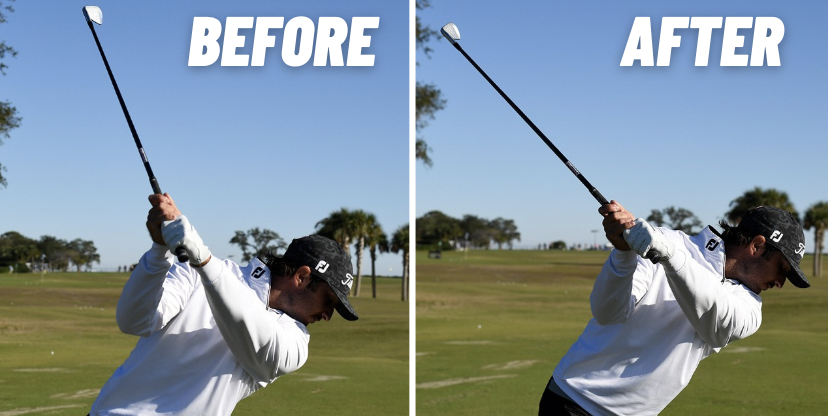IMPROVE MY GAME
Articles
Mark Blackburn Shares Max Homa's Body-Swing Connection
Max Homa isn't just one of the best golfers in the world, he's also one of the most popular. It's hard to find an athlete with a higher approval rating than Max. To paraphrase Scott Van Pelt, Twitter doesn't agree on anything, but everyone on Twitter likes Max Homa.
As if his personality didn't give us enough reasons to root for him, Max is also coached by TPI Advisory Board member, lead instructor and the PGA's 2020 National Teacher of the Year, Mark Blackburn.
Titleist asked Mark to share a bit about what they'd been working on and he provided some fascinating insight into Max's Body-Swing Connection.
One of the screens that Max struggled with was the Lat Test. Specifically, he had a difficult time maintaining pelvic control while reaching his arms overhead. The relationship between lat/shoulder mobility and pelvic control may not appear obvious, but it's a common compensation we see with athletes who fail the test.
Here's Lance Gill at one of our Level 1 seminars in Chicago. Watch how the subject dumps the pelvis anteriorly as he reaches the end of his range of motion overhead.
Lack of pelvic control can be a contributing factor to a number of swing characteristics (or worse, injuries). In Max's case, losing pelvic control seemed to make it easier for him to get his arms stuck behind his body. For most amateurs, this can cause them to flip a club, inviting a dreaded two-way miss.
As Mark mentioned, Max is a terrific athlete and is able to effectively compensate to square the club at impact. The best in the world are the best in the world for a reason. That said, scrambling to square the face at impact wasn't the most consistent strategy, especially under pressure.
Whenever an athlete fails a screen, we give them two options: 1) they can work in the gym to develop their physical capabilities and 2) work with their coach to modify their swing to accomodate their physical capabilities. Mark's work with Max is a good example of the latter.
As Mark said, the goal when working with any athlete is to "match their physicality with what they do in the golf swing." One of the simple, but key modifications they made in Max's swing was to steepen the shoulder plane slightly so that he didn't have to rely so much on shoulder flexion at the top of the backswing. This helped him to square the clubface EARLIER in the downswing, giving him more control with his wedges and more consistency off the tee.
Check out Max's progress from a recent post on Mark's instagram. The post was prescient, as Max was lifting a trophy a few days later.

This is an excellent example of the insight that can be gained from a simple TPI screen. By understanding Max's physical capabilities, Mark had better information to guide Max towards a swing that would match what his body was able to do.
To learn more about how to perform this kind of assessment with your golfers, visit the Level 1 page on our website.